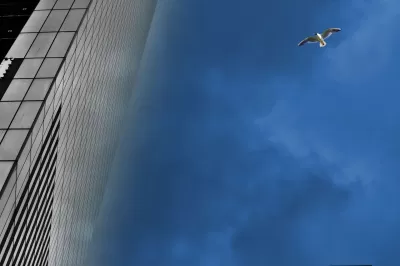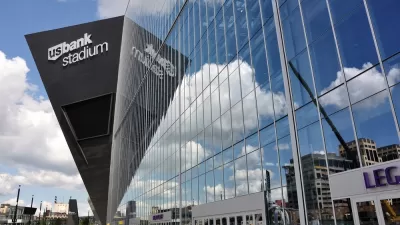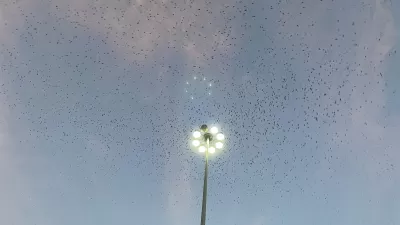The New York City Council approved Proposed Initiative 1482B by an overwhelming margin, ensuring bird-friendly design and construction practices in the largest U.S. city.

The New York City Council "passed a new regulation mandating the use of 'bird-friendly material' in all new construction projects," according to an article by Shawn Simmons.
"Conservationists hope the new bill will curb the number of birds killed annually by collisions with the city’s buildings, a figure that currently ranges between 90,000 and 230,000," adds Simmons of the legislation approved on December 10, 2019.
The new requirements "will require 90 percent of the first 75 feet of new buildings to be constructed with materials that are easier for birds to identify as obstacles."
John Rowden, director of community conservation at the National Audubon Society, is quoted in the article describing how glass contributes to bird collisions. New York City poses significant risk to migratory birds because of its location along the Atlantic Flyway, one of four major migratory routes around the world, according to Simmons.
A separate article by Caroline Spivack broke the news on December 10, providing more detail on the political context for the bill, making New York City the largest U.S. city to require bird-friendly construction materials.
FULL STORY: NYC passes legislation requiring bird-friendly construction

Maui's Vacation Rental Debate Turns Ugly
Verbal attacks, misinformation campaigns and fistfights plague a high-stakes debate to convert thousands of vacation rentals into long-term housing.

Planetizen Federal Action Tracker
A weekly monitor of how Trump’s orders and actions are impacting planners and planning in America.

In Urban Planning, AI Prompting Could be the New Design Thinking
Creativity has long been key to great urban design. What if we see AI as our new creative partner?

Chicago’s Ghost Rails
Just beneath the surface of the modern city lie the remnants of its expansive early 20th-century streetcar system.

Baker Creek Pavilion: Blending Nature and Architecture in Knoxville
Knoxville’s urban wilderness planning initiative unveils the "Baker Creek Pavilion" to increase the city's access to green spaces.

Pedestrian Deaths Drop, Remain Twice as High as in 2009
Fatalities declined by 4 percent in 2024, but the U.S. is still nowhere close to ‘Vision Zero.’
Urban Design for Planners 1: Software Tools
This six-course series explores essential urban design concepts using open source software and equips planners with the tools they need to participate fully in the urban design process.
Planning for Universal Design
Learn the tools for implementing Universal Design in planning regulations.
planning NEXT
Appalachian Highlands Housing Partners
Mpact (founded as Rail~Volution)
City of Camden Redevelopment Agency
City of Astoria
City of Portland
City of Laramie





























